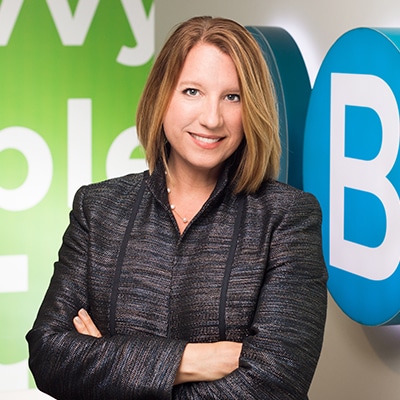Article written by:
Dustin Minton, CPA, MBA
Director, Restaurant Services
Rebekah Smith, CPA, CFF, CVA, MAFF
Director of Forensic & Dispute Advisory Services
Jeremy Bronson
Director, Accounting & Business Advisory Services
The time has finally arrived! We now know that the Small Business Administration (SBA) will begin to accept Paycheck Protection Program (PPP) loan forgiveness applications on Monday, August 10, 2020. The SBA announced the date through a long-awaited procedural notice on Thursday, July 23, 2020. This procedural notice provides guidance to the lenders on how to facilitate the forgiveness process between the lender and the SBA, as well as between the lender and borrower.
Even though the SBA will begin to accept applications on August 10th, your bank may still need additional time to ensure it is ready to work within the parameters set forth by the SBA, and operate with the technologies implemented by the SBA to process applications.
The other consideration is the pending legislation currently being negotiated between the White House and Congress. Any changes coming out of this pending legislation may require changes to the forgiveness process that may postpone the date that the SBA begins to accept applications. There continues to be discussion around converting PPP loans of $150,000 or less into a grant, effectively resulting in automatic forgiveness. Hence if your loan is $150,000 or less, we advise that you wait until the legislation is finalized before submitting your application for forgiveness, with the idea in mind that the legislation will be finalized by mid-August 2020.
What is important to the borrower from this procedural notice issued by the SBA? The notice explains the process of the application submission, lender review, SBA review, and appeals process.
- The overall key takeaway is to ensure your application is completed accurately, and all required documents are submitted at the time of application to avoid delaying the forgiveness decision. Until an accurate, completed application with required supporting documentation is submitted, the 60-day period for the lender to approve or deny the application does not begin.
- The other emphasis noted is that the SBA has the discretion to review any PPP loan, of any size, at any time, at its discretion. Certainly, those PPP loans for a borrower of $2 million in the aggregate will be subject to SBA scrutiny, but others may be as well on a discretionary basis.
The lender will be the main facilitator between the borrower and the SBA. Once the lender makes a recommendation as to whether the forgiveness has been approved in whole, approved in part, denied, or denied without prejudice, the lender will request payment from the SBA for the forgiven amount. The SBA will remit payment plus accrued interest no later than 90 days after the lender’s request, subject to any SBA review of the loan application.
In addition to notifying the SBA, the lender will also notify the borrower of the lender’s decision. If forgiveness is denied, the lender must notify the borrower in writing that the lender has issued a decision to the SBA to deny the application. Thereafter, the SBA reserves the right to review the lender’s decision at its discretion. If the borrower disagrees with the decision, the lender and SBA decision is subject to an appeals process as follows:
- The borrower may notify the lender to request the SBA to review the lender’s decision within 30 days of written notice.
- Within five days of receipt of the borrower’s request for review, the lender must notify the SBA.
- The SBA will determine whether to review or not. If the SBA declines, the lender will be notified. If the SBA accepts, both the lender and borrower will be notified.
If you recall the original PPP loan application process, you will likely remember the various complexities and delays encountered. There is likely to be a similar “run on the bank” for forgiveness, as many companies simply want this process completed and the loan removed from their balance sheet sooner than later. Even if a forgiveness application is submitted on August 10th (assuming that banks even start accepting applications that day), the forgiveness process could stretch into January 2021 if the entire 150 days (60 for the lender and 90 for the SBA) pass before the final decision is reached. In order to avoid delays, we recommend the following:
- Be thorough with your loan forgiveness application and complete all worksheets provided even if not required to be submitted. These worksheets will lead you to the right answer and provide appropriate documentation for your file.
- Read the instructions thoroughly, and if you still have questions, ask your lender or CPA for help.
- Organize your documents so you and your lender can easily follow and reference them. If you have spent more than your loan proceeds on eligible payroll and non-payroll costs, consider only including eligible payroll costs and then the next big item to achieve maximum forgiveness (i.e., rent for ease of review). Supporting documentation for utilities can be quite burdensome, especially if you have multiple locations covered by a loan.
- Take the time to write a good faith certification memo to memorialize why your company needed the PPP loan. As all companies are subject to SBA review, having this memo will help expedite the process and overcome any hurdles.
- If you determine that you qualify for the FTE safe harbor, as a result of the inability to return to pre-COVID-19 levels due to social distancing, sanitary or other health and safety regulations, document your file with the justification and analysis regarding this safe harbor. While not required to be submitted, it is required that the borrower keep internal documentation.
If you have any questions or require additional help, please contact us to learn more about our service offerings regarding the loan forgiveness application and good faith certification memo.

